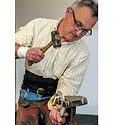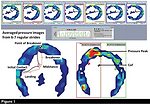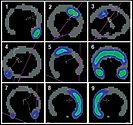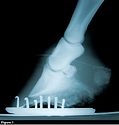Advertise Follow Us
Trimming
Upper Body Straightness is Key to Jumper Success
Wisconsin farrier relies on rockers and a two-plane approach to trim
Read More
2020 Farrier Business Practices Survey
Full-time Farrier Income Skyrockets
Data from the latest Farrier Business Practices Survey shows an 11% increase in yearly gross income compared with 2 years earlier
Read More
Battle Winter Moisture Woes with Nutrition
Improve hoof quality with supplements and shorter shoeing cycles
Read More
How Trimming Methods Influence Equine Gait and Load
Leipzig University study finds that hoof-care techniques should be tailored to the individual horse’s needs
Read More
Hoof Health Hinges on Dynamic Climates
Ever-changing environment can leave your clients’ horses struggling to adapt
Read More
Research Journal: July/August 2020
The information, ideas and opinions expressed are those of the author and do not necessarily represent those of the United States Department of Agriculture.
Read More
Pressure Plate Analysis Measures Dynamic Weight Distribution
Ghent University researcher’s findings can influence trimming and shoeing for individual hoof-care cases
Read More
Observations
Think Again Before Trimming a Negative Palmar Angle Foot
Has the reliance on radiographs removed common sense before we pick up a foot?
Read More












